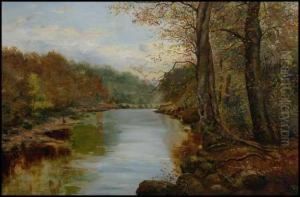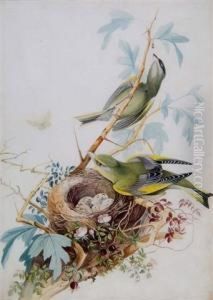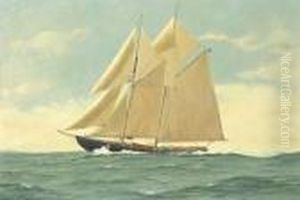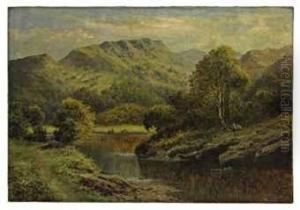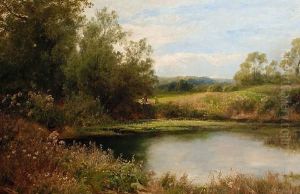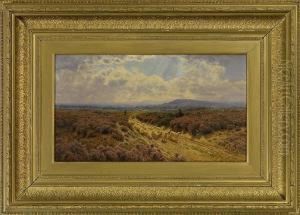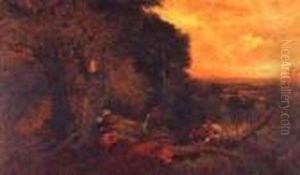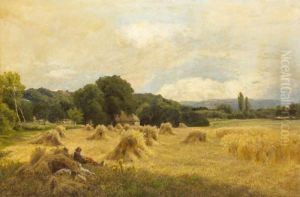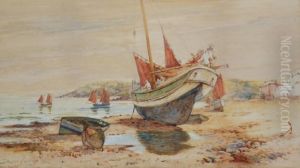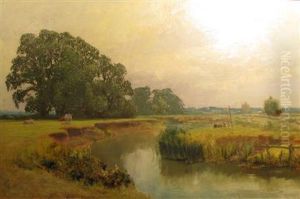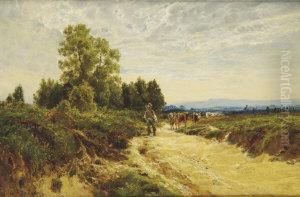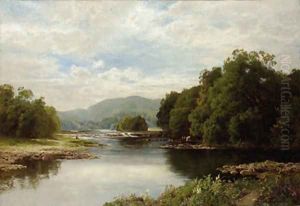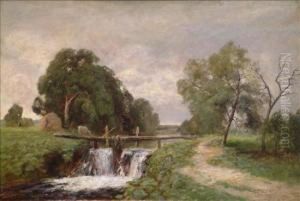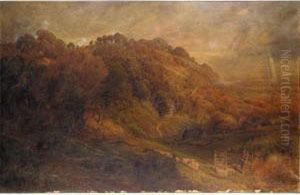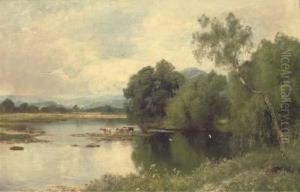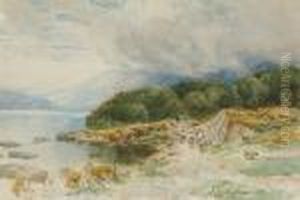John Clayton Adams Paintings
John Clayton Adams was an English landscape painter, born on June 11, 1840, in Edmonton, Middlesex. He was part of the second generation of the Hudson River School, which was an American art movement that arose from within a group of landscape painters who sought to represent the American landscape in a new light during the mid-19th century.
Adams was the son of a businessman and developed an interest in art at a young age. He studied at the Bloomsbury School of Art and later at the Royal Academy Schools. Though he was influenced by the Hudson River School, he spent most of his career in England and is associated with the English landscape tradition.
He exhibited at the Royal Academy from 1863 and also showed his work at the Royal Society of British Artists. His paintings often depicted the English countryside, and he was known for his skillful use of light and atmospheric effects. Adams enjoyed moderate success during his lifetime and was admired for his serene and pastoral landscapes.
Adams married Caroline Harper in 1864 and they had eight children. He lived and worked in Harpenden, Hertfordshire for much of his life. Later, Adams moved to 'Brackenhurst' in Ewhurst Hill, Surrey, where he continued to paint until his death on September 20, 1906.
Adams' work reflects a Victorian ideal of the English countryside, untouched by industrialization. His paintings are characterized by a fine attention to detail and often include scenes of agricultural life and rural tranquility. Today, his works can be found in various art galleries and private collections, and he is remembered as a significant figure in English landscape painting.













